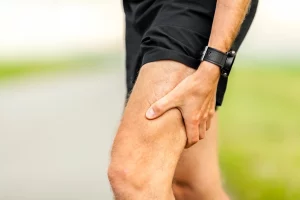In today’s vlog, David Fitzgerald talks about a very common problem that, although many people believe that this is a simple issue that can be easily resolved. Tendonitis can become a real clinical nightmare, often becoming a chronic and persistent issue that is resistant to all types of treatment.
It’s important, for this reason, to identify clearly the early signs and find the most appropriate treatment for the problem. The most immediate and simple diagnosis is the inflammation of the tendon; the common areas in your body that can usually be affected can be the achilles tendonitis, located at the back of the heel or the patellar tendonitis, around the kneecap.
While these are the main issues related to lower limbs, there are also a number of issues that can affect your upper limbs. We are talking about the so called “tennis elbow” or “golfer’s elbow”, two tendons attached on either side of the elbow. The shoulders can be affected as well with issues related to the rotator cuff tendons, which keep the bone and socket aligned.
How severe can a tendonitis be?
The reality is that there is a much bigger scale of severity that can go from minimal irritation to inflammation around the surface of the tendon, finally to more persistent and lasting inflammation penetrating into the tendon and making it a much more complicated issue.
The main difference between a tendonitis and tendinosis is very academic and quite specific; tendinosis refers more to what happens when the tendon has been persistently inflamed for long periods of time, when degenerative changes in the tendons start happening, such as joint changes or “wear and tear arthritis”. The aforementioned degenerative changes, of course, mean that tendons might not be able to handle loads and generate strength from the muscles. This is an important phenomena to diagnose as quickly as possible as the biggest priority is to understand what the origin of the problem is. Upper limb problems can be caused by activities such as pruning in the garden or chopping logs; on the other hand, lower limb problems can be caused by increased walking or climbing steps. Most of these usually start off as a bit of a niggle, as David defines it, and patients think that it’s only temporary muscle soreness from increased activity. If the problem is not spontaneously resolving after a few weeks of persistent level of pain (even if this is low) and it gradually starts deteriorating, becoming more severe and limiting, then it’s necessary to seek professional help in specialised centres, such as Dublin Physiotherapy. If your issue persists for longer than a week, then it might require a more complex type of management.
The next thing that is essential to diagnose as soon as possible is whether the tendonitis has led to a partial tear of the tendon or not. If this is the case, in fact, we’re talking about structural damage that usually presents itself as a sore tendon which will prevent you from executing your daily functions normally.
At the severe end of the spectrum we find issues like tendon raptures. Achilles tendon rapture, for instance, commonly affects middle-aged people doing activities that might put the tendon at risk of snapping; stepping off a curb is one of the most common causes of this problem.
Main reason behind tendon issues
The main problem about tendons is that these don’t have a good blood supply so when an inflammation happens it can be slow for all the inflammatory materials to be removed from the area; this also means that tendons are slow tissues to repair. It is essential to know as much as possible about tendinitis and, thanks to David’s video, you can have an insight on this issue and understand when you should draw the line between a sore muscle that persists for a few days and a serious damage to your tendons and joints.
Of course every case is different, however, recovering from tendonitis can be a long process that can’t be rushed as it requires attention and care. What you don’t want is this becoming a chronic issue that will limit the intensity of activities you can conduct on a daily basis.
David gives you a deeper insight on the many issues that can lead to tendonitis and what the many possible treatments are, so make sure you check out his video in order to learn more about this.




